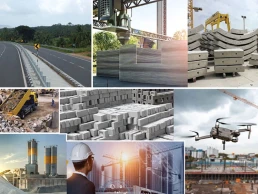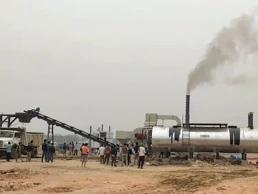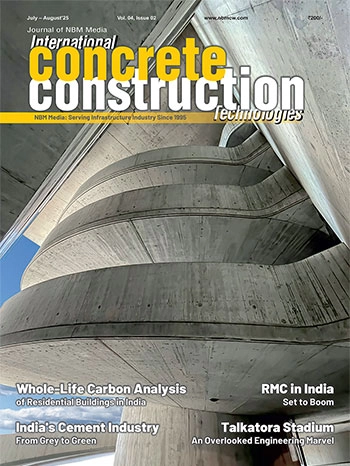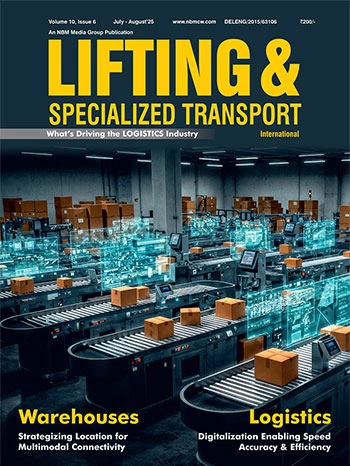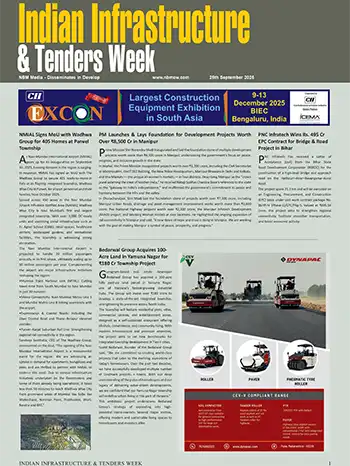GST Council Slashes Cement Tax to 18%, Cuts Rates on Key Construction Materials
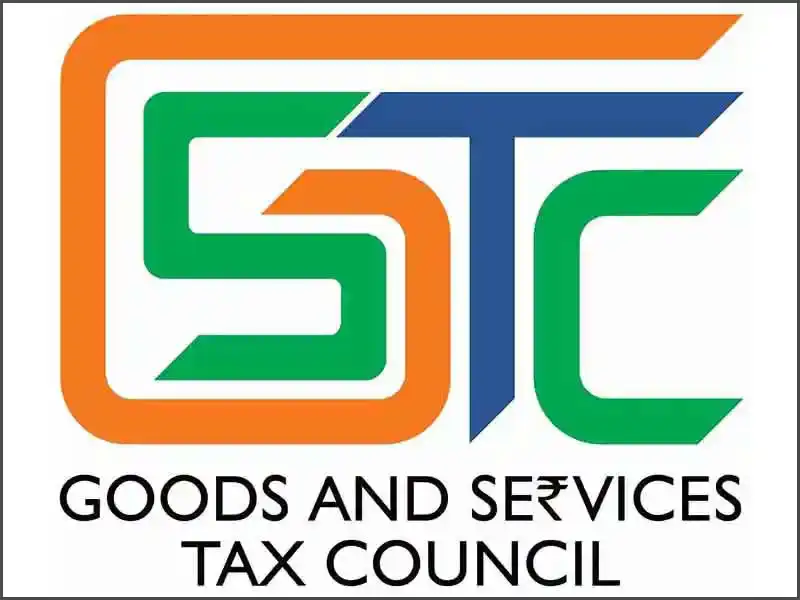
At its 56th meeting, the GST Council reduced the tax on cement from 28% to 18%, a move expected to significantly ease construction costs for residential and commercial projects. Taxes on uncut granite, marble, and travertine blocks were lowered from 12% to 5%, while sand lime bricks and stone inlay work also came down from 12% to 5%. Similarly, Portland cement, aluminous cement, slag cement, super sulphate cement, and other hydraulic cements saw their GST rate cut from 28% to 18%.
The Council’s decision is set to reduce project costs and provide relief to developers and homebuyers, though the benefits may take time to reflect due to ongoing contractual commitments.
Industry Reactions on GST Rate Cuts:
Anupama Reddy, Vice President & Co-Group Head, ICRA Ltd
Rural housing will be a key beneficiary from the Government’s decision to reduce GST on cement from 28% to 18% . With cement accounting for nearly 10-12% of total construction costs in rural housing, this tax cut translates into a 0.8%–1.0% reduction in overall construction expenses. This provides some relief to low-income families and supports the broader Housing for All mission. The price benefit of Rs 26-28/bag will be transferred to retail customer, without materially affecting profitability of cement manufacturers. The timing of this move is also strategic, aligning with the seasonal surge (post monsoon period) in the construction activity across rural and semi-urban regions.
Vivek Bhatia, Managing Director and CEO, TKIL Industries
The 56th GST Council reforms are a forward-looking step towards Viksit Bharat! We welcome the initiative to place more purchasing power in the hands of consumers which will certainly accelerate broad based economic growth! At a time of global uncertainty, the reforms provide a welcome boost to clean energy and industrial transition. The cut in GST on cement from 28% to 18% will speed up infrastructure development and make adding capacity more appealing. Cutting GST on renewable devices and fuel-cell vehicles aligns India with its decarbonization strategy. It gives manufacturers a better case for boosting sustainable solutions. From the perspective of TKIL Industries, these reforms will go far beyond just the tax reduction that will be immediate, but will provide a big positive push, reinforcing our position as the fastest growing leading economy, fast track our growth to becoming the third largest economy, accelerate Make in Bharat, promoting cleaner technology, positioning Bharat as a global leader in the energy transition. Our congratulations and appreciation to Central and State Government leaders for taking this bold and welcome step!
Vimal Nadar, Senior Director & Head of Research, Colliers India
The newly announced two-slab GST structure of 5% and 18% is a progressive move to rationalize the prevailing inverted duty structure, improvise classification, simplify approvals & processing refunds. These measures will surely cut costs at different tiers while enhancing the ease of doing business and driving consumption.
Within real estate, the slashing of GST on cement will play a critical role in rehauling project cost structures as cement forms a major value component in the overall cost of construction. Residential real estate, particularly new homebuyers, stand to gain as developers are likely to pass on the benefit of lower costs in the form of reduced housing prices. Developers’ profitability margins, too can potentially improve, enhancing the overall financial health of the real estate sector. The timing of this rollout is appropriate, with the festive season in the offing and the real estate sector is already reaping the benefits of favorable interest rates.
Sorab Agarwal, Executive Director, ACE
The GST Council’s decision to revise tax rates is a progressive move for the economy at large. For the construction and infrastructure space, the reduction in GST on key building materials is expected to significantly ease input costs, accelerate project execution, and provide much-needed momentum to the sector. This will not only improve affordability for end-users but also stimulate investments and create stronger linkages across allied industries.
Separately, the reduction of GST on agricultural equipment from 12% to 5% is a landmark decision that will directly benefit farmers and the rural economy. At ACE, we believe that this move encourages us to focus more on the sector mechanisation and enable higher productivity in agriculture. It is well aligned with the government’s vision of doubling farmers’ income and fostering rural prosperity.
Together, these measures will unlock growth across urban and rural sectors, boost economic activity, and strengthen India’s journey towards becoming a more resilient and inclusive economy.
Nagendra Nath Sinha, MD, Rodic Digital & Advisory
The recent reduction of GST on critical construction materials such as cement and steel from 28% to 18% is a game-changer for India’s infrastructure sectors. With cement and steel forming nearly 40–45% of project costs, this change will cut material tax burden by about 10% and help in saving nearly ₹10 lakh on every ₹1 crore spent. Such savings will make projects more viable, accelerate execution, and boost participation in Public-Private Partnerships. The real estate sector, especially affordable housing, will also benefit as developers pass on cost efficiencies to consumers. Equally important, reduced tax pressure will limit the incentive for informal procurement, strengthening transparency and compliance. Faster refund decisions would also benefit the industry due to improved cash flow and lower interest liability. Furthermore, with simplified tax structures, we can better track investments and reduce reliance on informal procurement channels, enhancing transparency across the sector. We believe this landmark step will accelerate the nation’s infrastructure growth, catalyse real estate momentum, and set new benchmarks for transparency and efficiency.
Aman Sharma, MD and Founder, Aarize Group
The GST Council’s move to slash tax rates on cement and other construction materials is a landmark step for the sector. Cement alone contributes nearly one-third of overall construction costs, and its rate reduction from 28% to 18% will directly enhance cost efficiency for developers. This will not only accelerate project timelines but also allow developers to channel savings into quality enhancements and sustainable building practices. Importantly, it improves housing affordability for end-users and boosts investor confidence in the long run. Such policy measures provide the necessary impetus for long-term growth in both residential and commercial real estate markets.
Manish Jaiswal, CEO, Eldeco Group
We welcome the GST Council’s decision to reduce the tax on cement from 28% to 18%, alongside sharp cuts on marble, granite, sand-lime bricks, and inlays. As cement constitutes a large portion of construction budgets, this reprieve stands to ease both developer pressures and buyer costs. In our field projects today, we estimate construction savings of around 5%, which—if passed through—could significantly improve affordability and margin comfort across mid-income and premium housing products. This reform could be a timely catalyst—offering a festive boost to real estate demand and confidence.
Santosh Agarwal, CFO & Executive Director, Alpha Corp Development Limited
“The rationalisation of GST slabs represents an important step toward simplifying India’s tax framework and enhancing transparency in the real estate sector. By potentially reducing the tax burden on housing, this reform is expected to strengthen buyer confidence, encouraging more informed and faster decisions. For developers, a predictable and streamlined GST structure could reduce transaction complexities and enable smoother project execution. This reform will provide fresh momentum to the real estate sector, supporting sustained growth and reinforcing India’s position as a dynamic housing market.
Subhashendra Kumar, CFO, Trehan Iris
We welcome the move towards a simplified two-slab GST structure of 5% and 18%, which marks a progressive step for the sector. The rationalisation of taxation is expected to lower overall project costs, enabling developers to offer more competitive pricing to homebuyers. At the same time, it will bring greater transparency and streamline compliance, thereby improving operational efficiency. Such policy clarity is likely to reinforce buyer confidence, stimulate demand across the housing market, and lay the foundation for sustained long-term growth for both homebuyers and the real estate industry.
Yateesh Wahaal, Director, M3M India
The GST rationalisation on cement, steel, and other core construction materials is a welcome and progressive step for the real estate sector. It signals the government’s commitment to supporting infrastructure growth and easing cost pressures in a high-input industry. While the overall impact will unfold over time across various asset classes, this move undoubtedly contributes to a more sustainable and cost-efficient development environment. At M3M India, we are closely evaluating the implications and remain focused on delivering quality and value across all our projects.
Vinod Aggarwal, Vice Chairman EML & Managing Director & CEO, VE Commercial Vehicles
The GST reform announced yesterday is a very positive and pro-growth move that will immediately lift consumer sentiment and boost demand across a broad range of sectors. It truly a festive gift from the government to the nation and the automotive industry. We wholeheartedly applaud the finance minister and the GST Council for reducing GST on commercial vehicles—buses and trucks—from 28% to 18%. This will not only reduce logistics costs for the economy, but encourage customers to upgrade their fleets with modern, fuel efficient and safer trucks and buses.
For buses, this will encourage much-needed fleet modernisation by state transport corporations and private operators, strengthening public mobility. For trucks, it will ease cost pressures for fleet operators and stimulate demand in logistics and freight, which are critical for India’s growth momentum. Together with the reduction in GST on auto components, the GST reforms reinforce the government’s commitment to enabling sustainable growth of the auto sector.
Piyush Bothra, Co-Founder and CFO, Square Yards
The latest GST restructuring comes as a major boost for the real estate sector. With the reduction in costs of key construction materials such as cement and steel, input expenses for developers are expected to ease, making projects more viable. The move towards a simplified two-slab structure will also streamline compliance, making processes smoother and faster. For the residential segment, this is likely to translate into tangible benefits for homebuyers as developers pass on the savings over the coming months. While the impact may take some time to reflect, it could provide much-needed relief in the backdrop of rising property prices and add to overall affordability. Coupled with the optimism of the upcoming festive season, these reforms are well placed to drive stronger demand in the property market.
Shrinivas Rao, FRICS, CEO, Vestian
The recent reduction in GST rates is poised to strengthen the real estate sector by reshaping demand–supply dynamics. Lower GST on construction materials is expected to enhance housing affordability by reducing input costs, while reduced GST on other goods could improve disposable income, thereby stimulating real estate demand. However, the overall impact may remain limited if these savings are not adequately passed on to end-consumers.
Deep Vadodaria, Managing Director, Nila Spaces Limited
The recent GST slab rationalization marks a pivotal shift for the real estate sector. Affordable housing is set to gain significantly, as reduced tax outflows will make home ownership more accessible for first-time buyers and middle-income families. More importantly, these changes will also ease the monthly cash flows of Indian households since essentials are now cheaper, and families will save more on their daily necessities. This additional liquidity enables buyers to take on higher risk for long-term assets like homes, directly improving affordability. In effect, demand will be buoyed by two key factors: lower construction input costs and higher disposable incomes. This aligns well with the government’s push toward Housing for All and will stimulate demand in Tier 2 and Tier 3 cities, where affordability is the key driver.
On the other hand, luxury housing falling under the 40% slab will see muted momentum in the short term, as higher taxation makes buyers more cautious. Developers will need to innovate, focusing on differentiated experiences, green design, and value creation to maintain traction in this segment. Overall, the restructured GST slabs will not only boost affordability but also steer the market toward a more balanced and inclusive growth trajectory.
Avneesh Sood, Director, Eros Group
The GST Council’s move to reduce the tax rate on cement from 28% to 18% is a landmark reform that will have far-reaching benefits. For the common man, this directly translates into greater affordability in home construction and aligns perfectly with the government’s vision of ease of living. At the same time, developers gain significant relief on input costs, which ensures ease of doing business and creates healthier project economics. This step will encourage timely delivery, improve margins, and ultimately make housing more accessible, especially in the affordable and mid-income segments where cost sensitivity is highest. Beyond immediate savings, the reform is also set to boost buyer sentiment and sustain housing demand at a critical juncture for the industry. It is a well-calibrated policy decision that supports both consumers and developers, while reinforcing the national mission of ‘Housing for All.
Manas Mehrotra, Founder, 315Work Avenue
The announcement of GST reforms on construction materials is a welcome step for the broader economy. The most direct beneficiaries will be B2C sectors such as FMCG and exempted service providers, where GST input tax credit cannot be fully claimed. For these segments, the lower rate translates into genuine cost savings and improved affordability for consumers. However, for the coworking sector, the real advantage lies in improved cash flow management and working capital efficiency. As coworking operators, we invest heavily in infrastructure and fit-outs. Although GST input credits are available, the upfront outflow of GST has historically placed pressure on working capital. This will help coworking operators plan growth more efficiently and expand further. Overall. this will support quicker scaling and enhance the value proposition for our clients.
India’s workforce is steadily moving towards hybrid models, increasingly relying on shared spaces. Making construction more viable will encourage the creation of modern, well-designed work environments which will ensure that talent across the country has access to world-class infrastructure to innovate, collaborate, and grow. By enabling sustainable commercial infrastructure, it strengthens job creation, supports entrepreneurship, and adds momentum to the government’s vision of building a self-reliant, future-ready economy.
Alakshendra Singh, Head of Corporate Communication, Eros Group
The reduction in GST on cement from 28% to 18% is a major policy move that can lower overall construction costs by 2–3%, given that cement accounts for roughly 30–35% of total building material expenses. This change improves project viability for developers, enabling faster completion timelines. For homebuyers—especially in the affordable and mid-income segments—it translates to greater housing affordability and improved price stability. Announced ahead of the festive season, the timing is well-suited to boost market sentiment and encourage home purchases. Beyond short-term gains, this reform aligns with the government’s ‘Housing for All’ vision by making homeownership more attainable and sustainable.
Yogesh Bhatia, MD & CEO, LML Realty
The GST Council’s decision to reduce GST on critical construction materials like cement from 28 percent to 18 percent marks a significant and timely intervention for the real estate sector. This reduction will substantially ease input costs, enhancing project viability and enabling developers to deliver greater value to end-users. At LML Realty, as we embark on building India’s new industrial addresses, we're confident this reform will not just underpin the competitiveness of our new industrial park, but also support broader infrastructure growth and housing affordability across the country,” said Dr. Yogesh Bhatia, MD & CEO of LML Realty.
Anuj Puri, Chairman, ANAROCK Group
The forthcoming GST changes, which will go into effect from September 22, 2025, will have a positive impact on the Indian residential, retail, and office real estate sectors.
Residential Real Estate
Lower construction costs - Reduced GST on construction materials like cement can reduce construction costs by as much as 3-5%. Developers, especially those engages in creating affordable housing, will get major relief in terms of cash flows and margins. ANAROCK Research reveals that the affordable housing category (below Rs 40 lakh) has seen its share of total sales decline from 38% in 2019 to just 18% in 2024. The share of new supply dropped even more dramatically from 40% in 2019 to just 12% in H1 2025. The reduced construction costs, if passed on to homebuyers, can boost demand in these segments.
Clearer taxation - The simplified GST structure does away with the old five-slab system and now has only two primary slabs of 5% and 18%, in addition to a 40% rate on luxury and so-called ‘sin goods’. The resultant pricing clarity will go a long way in improving overall consumer confidence. The simplified framework will make the tax implications of buying homes clearer and this clarity can potentially bring significant numbers of first-time buyers and fence-sitters to the market. This would have an especially notable impact in tier-II and tier-III cities.
Commercial Real Estate
Commercial real estate currently attracts 12% GST with Input Tax Credit (ITC) available. However, recent developments have complicated the landscape a bit. The elimination of ITC on commercial property leasing implies that developers will no longer be able to claim ITC on project-related costs. This retrospective amendment may increase operational costs and rental prices for office spaces and other commercial properties.
The Reverse Charge Mechanism (RCM) for commercial property rentals by unregistered suppliers, which requires tenants rather than landlords to pay 18% GST on such rentals, adds compliance burden for businesses renting commercial spaces.
Retail Real Estate
Better project viability – The reduced GST on building materials will result in lower input costs for developers and help speed up the supply of retail real estate projects. Since shopping centres and retail complexes will now incur reduced construction costs, this may result in more competitive rental rates.
Supply chain benefits - The GST rationalization will bring down logistics costs and help streamline supply chains, benefiting retail real estate operations. However, retail properties used for commercial purposes will continue to attract 18% GST on rental income.
Sector-Wide Boost
These reforms are major positive shift for the Indian real estate industry. Apart from improved transparent and ease of compliance, this simplified GST system will remove most classification confusion and disputes. Since developers will now face lower administrative burdens, they will be able to focus on what really matters – timely completion of projects and overall customer satisfaction – rather than on ways on means to save on taxes.
We can logically expect this major reform to attract more institutional investment into the Indian real estate sector, while also boosting housing supply across the country. The government is dovetailing these reforms with the festive season to maximize their positive impact on consumption. This is a major relief amid the ongoing macro-economic challenges and their impacts on sentiment and business outcomes.
The reforms are especially positive news for affordable housing. India currently has a shortfall of nearly 1 crore budget homes in urban markets, and this number could rise to 2.5 crore by 2030 without focused interventions. These GST reforms bring lower construction costs and improved ease of compliance, which can go a long way towards reversing this trend making homeownership more accessible to middle-class families.
Ashok Kapur, Chairman, Krishna Group and Krisumi Corporation
“The GST Council’s decision to approve the implementation of next-generation GST reforms is a crucial step towards simplifying India’s tax structure and boosting economic growth. For real estate, these reforms are particularly significant as they will directly benefit from reduced taxes on raw materials like cement and marble blocks, lowering the cost of constructing homes, ensuring easier compliance for developers, and improving overall affordability for homebuyers.
Sumit Agarwal, Director, Ashtech Group
The government’s move to reduce GST on cement, marble, and other key inputs will significantly reduce construction costs in both real estate and infrastructure. This is a significant step that is expected to not only ease the burden on developers but also stimulate demand and give a strong boost to the industry as a whole.
Vikas Bhasin, Managing Director, Saya Group
We welcome the government’s decision on broad GST rate rationalization, which will benefit the public at large. The reduction of GST on cement is also a positive step and will help ease construction costs. However, it is important to note that construction materials account for only about 25–30% of the overall cost of real estate projects, and cement is just one of the many inputs. Therefore, the impact of this move on end prices will be limited.
Deepak Kumar Jain, Founder and CEO of TaxManager.in
Real estate, being one of the most labour-intensive sectors, is expected to gain significantly from the reduction of GST rates—from 28% to 18%—on key construction materials such as cement, tiles, and other inputs. This move will help lower overall construction costs to some extent. It is also expected that developers will pass on these benefits to homebuyers by reducing property prices, which have risen sharply over the past few years.
Pradeep Aggarwal, Founder & Chairman, Signature Global (India) Ltd.
We wholeheartedly welcome the GST Council’s move on rate rationalisation ahead of the festive season. By reducing the tax burden, the move comes as a major relief for the common man. The housing sector, particularly, stands to benefit from GST reduction on input materials like cement from 28% to 18% and granite blocks from 12% to 5%, as this will ultimately reduce home prices for consumers and create sustainable demand across segments.
Suketu Thanawala Partner at StraCon Business Advisory Services
Reduced GST on construction materials will transform India's homebuilding sector. From 22 September 2025 onwards, key inputs such as cement, sand, bricks, ceramics, and sanitary ware transition to 18% (from 28%), reducing project costs and strengthening developer cash flows. Down rates on construction equipment and services will accelerate urban infrastructure deployments, ramping up supply of affordably priced homes. Real estate builders will transfer savings to homebuyers, allowing entry-level homes to reach broader customers and draw demand. Simplified compliance with the two-slab regime (5% and 18%) reduces regulatory irritants for builders, particularly small builders, inducing greater formalization. With builders achieving price flexibility and customers receiving lower costs, the homebuilding sector is in for robust expansion, supporting government initiatives on housing for all and strengthening the construction ecosystem on the whole.
Lincoln Bennet Rodrigues, Chairman and Founder, Bennet & Bernard
The GST rationalisation announcement is expected to increase savings, boost consumption, and improve liquidity and lift overall business sentiment. This is welcome particularly ahead of the festive season. For the real estate sector, this buoyancy is meaningful, as it will reduce the cost of construction. Housing demand is closely tied to consumer confidence and long-term financial planning. When households save more on essentials, it creates a positive environment that encourages investment in real estate, while also strengthening sentiment around property as a stable and rewarding asset class. At Bennet & Bernard, we view this reform as a constructive step that will support the demand cycle in housing and allied sectors. The government’s move not only aligns India with global best practices but also provides a timely push for industries that contribute significantly to economic growth, with real estate continuing to be a key driver.
Jetaish Gupta, Founder & Director, Adore Group
Today’s announcement to slash GST on cement from 28% to 18% is an enabling gesture for real estate. As one of the largest input costs is reduced, the reform enables builders to deliver affordable homes and expedite project timelines. For homebuyers, the tiered system of GST will ensure price points are more affordable, and India’s housing dream will get a new lease of life.
L.C. Mittal, Director, Motia Builders Group
With the GST slab being rationalized for construction materials, developers will focus on innovation and value rather than just costs. The primary beneficiaries will be affordable and mid-segment housing categories, ensuring quality housing is accessible to families in urban and semi-urban areas.
Annuj Goel, Chairman, Goel Ganga Developments
This is a double bonanza for home buyers, with cheaper houses leading to lower GST. For builders and construction companies, this landmark reform enables effective construction and affordable housing. Savings can be directed to unique amenities and eco-friendly designs, making property ownership attractive and accessible.
Manoj Goyal, Director, Forteasia Realty Pvt. Ltd.
With a simplified GST regime, the sector will enjoy more transparency and renewed trust among stakeholders. The lower tax on cement reduces construction costs, raises supply, and revives demand, offering fresh hope to builders and buyers alike.
Mahendra Nagaraj, Vice President, M5 Mahendra Group
The GST Council’s move to reduce the tax rate on cement from 28% to 18% is a landmark reform with ripple effects across the construction industry. Cement is one of the largest cost components in any real estate or infrastructure project, and a ~₹30 per bag reduction significantly eases input cost pressures.
For companies like ours, this directly translates to improved operating margins and enhanced flexibility in managing project budgets. It also creates room for smarter procurement, faster execution, and more competitive pricing, especially in price-sensitive urban markets.
From the buyer’s perspective, this reform brings meaningful affordability gains. In an environment of rising interest rates and high inflation, this move helps offset financial stress for the end customer.
At a macro level, this reform aligns with the government’s larger push for housing and infrastructure development, while also simplifying the tax structure through a streamlined two-slab GST system. It’s a win-win, boosting demand, improving developer viability, and reinforcing confidence in the real estate ecosystem.
Rajashekar Reddy, Director, Reddy's Infra Group
Reduced GST on construction materials will transform India’s real estate sector. From September 22, 2025 onwards, key inputs such as cement, sand, bricks, ceramics, and toiletware reduce from 28% to 18%, reducing project costs and improving developer cash flows. Reduced rates on construction equipment and services will boost urban infrastructure deployments, adding supply of affordably priced houses.
Developers will be able to transfer the benefits to homebuyers, which will make properties more affordable and drive demand. Simplified compliances for the two-slab regime (5% and 18%) decrease administrative hassles for builders, especially smaller contractors, facilitating formalization. With price flexibility for developers and customers benefiting through savings, the housing segment is poised for robust growth, supporting government ambitions on housing for all and strengthening the overall construction ecosystem.
Siraj Saiyed, Director, Arete Group
The Next-Generation GST Reforms are a progressive stride toward a more inclusive and business-friendly India. With rationalized tax slabs and exemptions on essentials, the reforms reflect a vision that balances economic prudence with social responsibility.
By easing household costs and enhancing financial security, families are empowered to invest in holistic lifestyles where homes stand for wellness and quality of life. The reforms go beyond tax simplification; they help build stronger communities by enabling long-term investments in housing, health, and education.
For businesses, streamlined compliance fosters a climate of innovation and customer-centricity. In the broader vision of Viksit Bharat 2047, these reforms pave the way for inclusive growth.
Sunil Pandita, Chief Division Officer, Nemetschek Group
The recently approved GST reform bringing a two-tier structure of 5% and 18% from September 22 is a welcome stride towards simplifying taxation in India. For the AEC/O industry, the cut in GST on cement from 28% to 18% and reductions on other key construction materials are crucial.
Such measures will help moderate construction costs, easing pressure on real estate developers and encouraging sustainable infrastructure growth. We with our digital solutions for construction lifecycle management, sees this as a positive momentum that aligns with the broader industry push for cost efficiency and productivity gains. Additionally, lower GST on consumer electronics will aid wider adoption of technology on construction sites. These reforms are timely to help increase demand and investment in India’s growing infrastructure sector, supporting our vision of enabling smarter, more efficient construction through digital transformation.
Akshay Taneja, Managing Director, TDI infrastructure
"The Next‑Generation GST reforms mark a leap toward an inclusive, efficiency‑driven real estate ecosystem. Rationalising GST to two slabs 5% and 18% effective from September 22 removes complexity and reduces costs, especially on core materials like cement, which has dropped from 28% to 18%, translating into savings of nearly ₹30 per bag.
For emerging real estate hubs such as Kundli, this reduction will lower construction costs, encourage new investments, and catalyse job creation especially significant for India's youthful workforce. These reforms go beyond tax cuts as they strengthen India’s urban fabric by enabling sustainable, integrated townships and bolstering Tier 2 and Tier 3 markets in alignment with Viksit Bharat 2047.
These reforms are policy, people, and purpose‑oriented milestones that propels climate‑conscious development, boosts affordable and commercial housing in Delhi‑NCR, and supports the evolution of self‑sustained communities across India.
Vishal Raheja, Founder and Managing Director, InvestoXpert:
"The Next-Generation GST reforms represent a significant advancement for the real estate sector. Simplified taxation and reduced costs on key construction inputs will improve project feasibility and affordability, particularly in rapidly growing urban regions such as Delhi NCR. This is expected to accelerate both ongoing and upcoming developments across residential and commercial spaces.
With compliance made simpler and the tax regime more predictable, developers and investors alike benefit from reduced uncertainty. This clarity supports faster execution, encourages steady capital inflows, and contributes to a healthier supply pipeline for housing and infrastructure.
The reforms align with the vision of Viksit Bharat by fostering inclusive, resilient urbanization while creating an enabling environment for sustainable development across India’s real estate hubs.
Pratap Alwat, Managing Director, Pranshi Infra Advisor Pvt. Ltd.
“The Next-Generation GST reforms are a milestone that balances economic growth with social equity. By simplifying tax structures and exempting essential services, the reforms improve clarity and predictability in the real estate sector. This transparency strengthens the environment for long-term investments and supports more informed decision-making across emerging and established markets.
Reduced compliance burdens also lower operational friction, allowing stakeholders to redirect focus toward strategic planning and value creation. As affordability improves for households, demand across housing and infrastructure is expected to rise, energizing the ecosystem more broadly.
These reforms mark a step toward a future-ready and citizen-centric economy, encouraging transparency, inclusivity, and sustainable growth in line with India’s long-term development vision.
Vimal Kejriwal, Managing Director & CEO, KEC International
India’s historic GST reform is poised to drive stronger execution momentum across the infrastructure sector. The reduction in GST on cement is expected to unlock working capital, improve cash flow efficiency and accelerate project delivery timelines.
Cyrus Mody, CEO and Founder of Viceroy Properties
The GST reforms demonstrate a desired shift towards a more transparent and simplified path to taxation. For luxury real estate, the reduction in GST on cement from 28% to 18% and on items like marble and granite from 12% to 5% means that overall construction costs will reduce by nearly 5%, enhancing project efficiencies. At Viceroy Properties, we believe that these reforms serve as an opportunity to elevate the standards of luxury living in India—whether that be using sustainable materials that are locally sourced or delivering high quality residences that meet global standards. Beyond that, the reforms represent long-term value for discerning homebuyers and investors at a time when the luxury housing demand in India has grown over 40% in the last two years. The clarity gained by reducing complexity and developing confidence amongst investors, will have many more people consider Indian luxury real estate for themselves and from an investment perspective as there really has never been a better time to explore luxury real estate for discerning homebuyers and investors.
In parallel, lower GST rates on various consumer-facing categories are likely to boost consumption, creating a more favourable environment for sustained economic activity. This, coupled with the ongoing infrastructure push, is expected to catalyse private sector capex, adding further depth to the investment cycle.
A timely and progressive reform that aligns with KEC’s focus on faster execution, operational excellence, and balance sheet strengthening—reinforcing India’s infrastructure growth story.
Dharmender Tuteja, CFO, Dalmia Bharat Ltd.
The reduction of GST rates for goods and services of mass consumption and particularly on Cement from 28% to 18% is a very positive step, both for consumers and industry. It will set in motion a virtuous cycle of creating higher purchasing power in the hands of wider cross section of population leading to higher consumption of goods & services and GDP growth in the economy leading to higher demand for cement also. Reduced prices of cement and higher purchasing power specially increase the affordability of housing for middle- & lower-income groups spurring the demand for cement. Reduced prices also improve affordability of premium categories of cement leading to likely shift of demand towards these categories. Dalmia Bharat welcomes this move and will meet the expected rise and shift in cement demand responsibly and sustainably.
Venkatesh Gopalakrishnan, Director Group Promoter’s Office, MD - Shapoorji Pallonji Real Estate (SPRE)
We welcome the GST Council’s landmark decision to rationalise tax rates on essential construction materials. The rate cut from 28% to 18% on cement, and from 12% to 5% on construction and finishing materials, is a strategic move. It will significantly ease project costs for developers and boost affordability for homebuyers. For developers, this relief lowers input costs and strengthens project viability. Industry voices estimate that overall construction costs could decline up to 5%. This offers scope for improved margins, as well as better pricing for end-users.
From the perspective of the housing market, especially the affordable and mid-income segments, this development is timely and impactful. Rising construction costs and pressure on margins have presented significant challenges to the sector. The potential pass-through of savings will encourage renewed demand. It will also enable more accessible homeownership.
At Shapoorji Pallonji Real Estate, we see this GST rationalisation as a much-needed stimulus. It simplifies tax structures and enhances transparency. It also aligns with the current positive buyer sentiment. We are optimistic that this reform will enhance purchase intent. This is especially true as we enter the festive season, a traditionally strong period for the real estate market.
Amit Gossain, Managing Director, KONE India & South Asia
The GST Council’s two-step rationalization towards a simpler 5% and 18% structure is a welcome reform. It not only eases compliance for businesses but also directly benefits the common man through reduced costs on essentials, healthcare, and mobility. For manufacturing and infrastructure lower rates on cement, auto parts, and renewable energy will boost India’s competitiveness, accelerate urban development, and create a stronger foundation for inclusive growth. At KONE India, we see these reforms as an enabler for sustainable urbanization and a more efficient business environment.
We also recommend that the council considers moving towards a centralised GST registration across states, which will further streamline compliance and ease of doing business for pan-India operations.
Neeraj Akhoury, President, Cement Manufacturers’ Association, and Managing Director, Shree Cement Limited
The Cement Manufacturers’ Association (CMA) welcomes the Government of India’s announcement reducing the GST rate on Cement from 28% to 18% on a long standing request of the Cement Industry. The Cement Industry considers it a progressive step towards simplifying the tax structure.
For a long time, Cement has been taxed at one of the highest rates among essential building materials compared to sectors such as steel and several other construction input materials. Lowering the rate to 18% corrects this long standing anomaly and ensures parity with other core materials.
Moreover, a reduction in GST stands to enhance the competitiveness of the Indian Cement Industry by creating a fair game with global peers. Given that Cement is a foundational input material for infrastructure and housing, treating it more fairly in the tax structure is consistent with global practices and will likely boost consumption of this key building material towards augmenting considerable infrastructure, including affordable housing.
We look forward to being the Nations’ continued partner in progress.
Deepak Shetty, CEO and Managing Director, JCB India Ltd
We welcome the forward-looking GST reforms. The move to a simplified 2-rate GST structure and resolution of inverted duty issues will improve ease of doing business.
Ahead of the festive season, lower GST on agricultural inputs like tractors, farm machinery, and irrigation systems will benefit rural customers by reducing costs and energize the rural economy. These reforms align with the Govt of India’s focus on infrastructure development and growth in the rural economy. Both are sectors to which JCB machines contribute immensely.




































